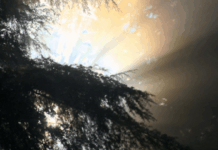The lone warrior, a silhouette against a misty Japanese dawn, has long captured the imagination of the world. This figure, the samurai, is more than just a historical warrior; they are a symbol of a way of life, a philosophy of honour, and a dedication to mastering one’s chosen path. This deep-seated admiration for the samurai spirit is something I feel personally, a yearning to understand a culture that so beautifully intertwines art, science, and a way of life. It is a journey towards expertise, a path of mastering one’s self.
This blog post will explore the world of the samurai, drawing inspiration from the poignant documentary “I Trained with Japan’s Last Samurai” and the epic film “The Last Samurai.” We will delve into the history, the philosophy, and the enduring legacy of these remarkable warriors.
The Way of the Warrior: A Glimpse into the Samurai’s World
The samurai, for centuries, were the protectors of Japan, a warrior class bound by a strict code of honour known as bushido. This code emphasised loyalty, self-discipline, and unwavering courage in the face of death. As the documentary “I Trained with Japan’s Last Samurai” reveals, the essence of the samurai is not just about swordsmanship; it is a state of being, a “zen-like” training of the mind and body. The video follows a journey to Tsushima Island, a place steeped in samurai history, where a modern-day sensei continues to teach the ancient ways. It’s a powerful reminder that the samurai spirit is not a relic of the past but a living tradition.
The documentary highlights that the path to becoming a samurai is not about aggression but about achieving a state of inner peace and balance. The training is a form of meditation, a way to silence the “inner noise” and connect with one’s true self. This is a stark contrast to the popular image of the samurai as a fierce and relentless warrior.
“The Last Samurai”: A Hollywood Epic with a Historical Heart
The 2003 film “The Last Samurai” brought the story of the samurai to a global audience. While a fictionalised account, the film is inspired by the real-life Satsuma Rebellion of 1877, a pivotal moment in Japanese history when the samurai class clashed with the forces of modernisation. The film tells the story of Captain Nathan Algren, an American military officer who is captured by samurai and comes to embrace their culture and their cause.
The film, while taking creative liberties, captures the essence of the samurai’s struggle to preserve their traditions in a rapidly changing world. It explores the themes of honour, loyalty, and the clash between tradition and progress. The character of Katsumoto, the leader of the samurai rebellion, is loosely based on the historical figure Saigō Takamori, a revered samurai who led the Satsuma Rebellion. The Last Samurai – Wikipedia
The Real Last Samurai: Saigō Takamori and the Satsuma Rebellion
The historical basis for “The Last Samurai” is the Satsuma Rebellion, a conflict that marked the end of the samurai era. Saigō Takamori, a highly respected samurai, led a rebellion against the Meiji government’s rapid Westernisation policies. The rebellion was not a rejection of all modernisation but a fight to preserve the samurai’s role in society and their traditional values.
The rebellion, though ultimately unsuccessful, cemented Saigō Takamori’s place as a tragic hero in Japanese history. He is remembered as a man who fought for his beliefs, even in the face of overwhelming odds. His story is a testament to the samurai’s unwavering commitment to their principles. Principals that are unshaken by external influences and is the embodiment of the inner warrior, the masculine, the traditionalist, the master of a trade.
The Enduring Legacy of the Samurai
Though the age of the samurai has passed, their spirit lives on. The principles of bushido – honour, courage, and self-discipline – continue to resonate in modern Japan and beyond. Both the film and the the documentary “I Trained with Japan’s Last Samurai” shows that the way of the samurai is not just about fighting; it is about living a life of purpose and intention. A life of dedication to a pursuit.
The samurai’s dedication to mastering their chosen art, whether it be swordsmanship, blacksmith, calligraphy, or the tea ceremony, is a powerful lesson for us all. It is a reminder that true expertise is not just about technical skill but about a deep and abiding commitment to one’s craft. Mastering the element of expression, the honouring of tradition. Standing on the shoulders of giants isn’t just to pay respects, but to honour the homage to the past, future and more importantly the present embodiment.
A Personal Reflection
My fascination with Japan and the way of the samurai is a journey of the heart. It is a desire to understand a culture that places such a high value on respect, honour, and the pursuit of excellence. The stories of the samurai, both historical and fictional, inspire me to strive for a life of greater purpose and meaning. Yet I’ve never been to to the islands of Japan.
The journey to Japan may still be a dream, but the lessons of the samurai are a source of inspiration that I can carry with me every day. It is a reminder that the path to mastery is a lifelong journey, a path of continuous learning, and a commitment to becoming the best version of ourselves. This can be done anywhere, no mystery school can teach you honour and determination, that’s an inner skill that needs cultivation. No person can teach you, if you’re not already receptive to learning. As is to teach is to learn, and visa versa. We must be prepared to teach ourselves, and seeking guidance is the wisdom of a sensei.
I hope this blog post has provided you with a deeper understanding and appreciation for the world of the samurai. It is a world of beauty, honour, and a timeless wisdom that continues to inspire us all. Especially me.
Disclaimer: We at Prepare for Change (PFC) bring you information that is not offered by the mainstream news, and therefore may seem controversial. The opinions, views, statements, and/or information we present are not necessarily promoted, endorsed, espoused, or agreed to by Prepare for Change, its leadership Council, members, those who work with PFC, or those who read its content. However, they are hopefully provocative. Please use discernment! Use logical thinking, your own intuition and your own connection with Source, Spirit and Natural Laws to help you determine what is true and what is not. By sharing information and seeding dialogue, it is our goal to raise consciousness and awareness of higher truths to free us from enslavement of the matrix in this material realm.
 EN
EN FR
FR


























